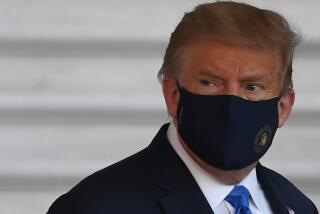Opinion: What’s the absolute risk of eating bacon?
- Share via
That sounded big, didn’t it? An 18% greater risk of colorectal cancer from daily consumption of about 2 ounces of processed meat?
For many people, what that sounds like is, “Wow, I’ve got an 18% chance of getting this cancer if I eat this meat, on top of whatever my risk was before it.”
But that’s not what the figure means. This isn’t to diminish the World Health Organization’s recent categorizing of bacon and other processed meats as carcinogens. That assessment is based on a strong body of science. The added risk from daily doses of sausage and deli meat is significant from a public health perspective.
It certainly makes a case for not overdoing it on the bacon, sausage and similar meat products.
But we journalists have generally done a poor job of explaining in these kinds of stories — the reports on how a certain habit increases risk by 20%, while another reduces risk by 15% — the difference between relative risk and absolute risk. The chances might be higher, but where the public is often left in the dark is: higher than what?
The average risk for Americans of getting colorectal cancer is 5%. That includes people who are at higher risk because of genetic propensity or gender. (Men are slightly more likely to get it.) For that matter, it also includes people who indulge in processed meats and those who don’t. But for now, let’s assume we’re talking about 5% for those who eat relatively little or none of the problematic meats.
An 18% increase in that risk means the risk rises from 5% to just under 6%. That’s the absolute risk. The 18% is called the relative risk — how much more (or less) likely one group is to get a disease than another.
Both numbers are important, and yet the public rarely hears both of them.
We’re likely to fret terribly at the news that children who receive multiple CT scans are three times more likely to get leukemia or brain cancer at some point. But as a science blog for a United Kingdom cancer organization put it, the risk of that child getting such a cancer is so miniscule — a tiny fraction of 1% — the increased risk would amount to one additional case of each kind of cancer in 10,000 children.
Compare that with lung cancer, which afflicts nearly 7.5% of American men over their lifetimes (the risk for women is slightly smaller). But smoking increases the risk by at least 1,500% (it’s a bigger risk factor for women), compared with the 18% higher risk of colorectal cancer through daily processed-meat consumption. But even a small increased risk factor for something as common as heart disease, which is responsible for a fourth of all deaths each year in the United States, would make a big difference in lives saved.
In other words, both numbers, the relative risk and absolute risk, matter. It’s something to keep in mind when a study or an advertisement comes along. A pill or supplement might cut the chances of getting a certain ailment by half — but if there was very little chance of getting that ailment in the first place, is it really worthwhile? And are the chances of a side effect from that product perhaps bigger than the chances that it would do us any good?
Colorectal cancer isn’t some rare ailment. It’s one of the most common forms of cancer in the United States. And an 18% higher risk isn’t nothing. The numbers are worth paying attention to, but they’re also worth putting in perspective, in part by providing information to the public about absolute risk.
Follow the Opinion section on Twitter @latimesopinion
More to Read
A cure for the common opinion
Get thought-provoking perspectives with our weekly newsletter.
You may occasionally receive promotional content from the Los Angeles Times.










